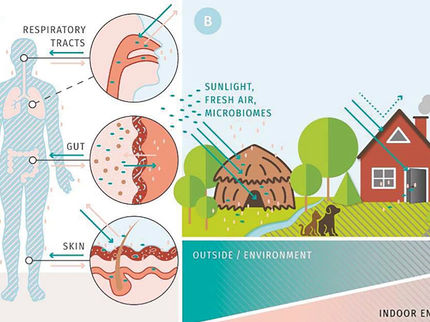UMBRELLA against heavy metals
Microbiologist at Jena University coordinates new EU research collaboration
"Please take" - as simple as following a recipe in a cook book, soils containing heavy metals could be remediated in the future: Depending on the kind of contamination and the conditions on the site in question, the best remediation recipe can be put together - that is the goal of a recently started research project. UMBRELLA is the name of the project that is coordinated at the Friedrich Schiller University Jena. The acronym UMBRELLA stands for "Using MicroBes for the REgulation of heavy metaL mobiLity at ecosystem and landscape scAle", indicating how to regulate heavy metal contamination by means of microbes.
"We want to develop a tool-box from which suitable parts can be chosen to remediate contaminated soils", says Prof. Dr. Erika Kothe from the University of Jena. The Professor for Microbial Phytopathology coordinates the international UMBRELLA team uniting 13 partners from eight European countries. Within the 7th Framework Programme of the European Commission, the project is funded within a volume of almost EUR 3 million for the next three years. Besides Prof. Kothe's team, geoscientists around Prof. Dr. Büchel from Jena University are involved in UMBRELLA as well.
By "tools" for the soil clean-up the microbiologist Kothe means, of course, microorganisms. The principle is simple: Bacteria and fungi take up heavy metals, like e.g. cadmium, nickel or copper, from the soil and store them. "This way, toxic substances are bound at least temporarily to microbes, relieving output into rivers and ground water", explains Prof. Kothe the effects of the "umbrella" against heavy metals. Apart from microorganisms, also suitable plants will be provided to remove the metals from the soil.
Such useful bacteria and plants can be found wherever there are heavy metals in the ground, for instance in the contaminated soils of the "Wismut" region - the former uranium ore mining area in eastern Thuringia and Saxony. To detect and characterize them systematically will be the focus of UMBRELLA. But not only there. "Throughout Europe we want to investigate six former mining districts", states Prof. Kothe. Apart from the "Wismut" mine waste dumps, the scientists will examine contaminated areas in Rumania, Sweden, Great Britain, Poland and Italy.
At first, those microorganisms and plants withdrawing heavy metals from the soil most efficiently must be identified - depending on the climatic, biological and geological conditions. "On a long-term basis, we want to improve and generalize existing remedial processes", explains Kothe. The microbiologist from Jena University regrets that current guide lines tend to look at soil and water protection separately. "UMBRELLA aims at a more holistic picture, relating the source of contamination to its entry and transport in ground water or rivers up to landscape level modeling." This is why the researchers also collaborate with appropriate authorities, for instance with the Thuringian Institution for Environment and Geology (Thüringer Landesanstalt für Umwelt und Geologie, TLUG).
Topics
Organizations
Other news from the department science

Get the life science industry in your inbox
By submitting this form you agree that LUMITOS AG will send you the newsletter(s) selected above by email. Your data will not be passed on to third parties. Your data will be stored and processed in accordance with our data protection regulations. LUMITOS may contact you by email for the purpose of advertising or market and opinion surveys. You can revoke your consent at any time without giving reasons to LUMITOS AG, Ernst-Augustin-Str. 2, 12489 Berlin, Germany or by e-mail at revoke@lumitos.com with effect for the future. In addition, each email contains a link to unsubscribe from the corresponding newsletter.



















































